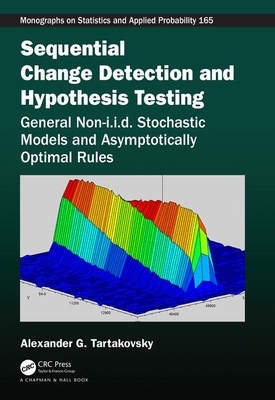Adaptive Radar Signal Processing
暫譯: 自適應雷達信號處理
Simon Haykin
- 出版商: Wiley
- 出版日期: 2006-11-01
- 售價: $4,790
- 貴賓價: 9.5 折 $4,551
- 語言: 英文
- 頁數: 248
- 裝訂: Hardcover
- ISBN: 0471735825
- ISBN-13: 9780471735823
-
相關分類:
數位訊號處理 Dsp
海外代購書籍(需單獨結帳)
商品描述
Description
This collaborative work presents the results of over twenty years of pioneering research by Professor Simon Haykin and his colleagues, dealing with the use of adaptive radar signal processing to account for the nonstationary nature of the environment. These results have profound implications for defense-related signal processing and remote sensing. References are provided in each chapter guiding the reader to the original research on which this book is based.
Table of Contents
Preface.
Contributors List.
1. Introduction (Simon Haykin).
Experimental Radar Facilities.
Organization of the Book.
Part I Radar Spectral Analysis.
2. Angle-of-Arrival Estimation in the Presence of Multipath (Anastasios Drosopoulos and Simon Haykin).
2.1 Introduction.
2.2 The Low-Angle Tracking Radar Problem.
2.3 Spectrum Estimation Background.
2.3.1 The Fundamental Equation of Spectrum Estimation.
2.4 Thomson’s Multi-Taper Method.
2.4.1 Prolate Spheroidal Wavefunctions and Sequences.
2.5 Test Dataset and a Comparison of Some Popular Spectrum Estimation Procedures.
2.5.1 Classical Spectrum Estimation.
2.5.2 MUSIC and MFBLP.
2.6 Multi-taper Spectrum Estimation.
2.6.1 The Adaptive Spectrum.
2.6.2 The Composite Spectrum.
2.6.3 Computing the Crude, Adaptive, and Composite Spectra.
2.7 F-Test for the Line Components.
2.7.1 Brief Outline of the F-Test.
2.7.2 The Point Regression Single-Line F-Test.
2.7.3 The Integral Regression Single-Line F-Test.
2.7.4 The Point Regression Double-Line F-Test .
2.7.5 The Integral Regression Double-Line F-Test.
2.7.6 Line Component Extraction.
2.7.7 Prewhitening.
2.7.8 Multiple Snapshots.
2.7.9 Multiple Snapshot, Single-Line, Point-Regression F-Tests.
2.7.10 Multiple-Snapshot, Double-Line Point-Regression F-Tests.
2.8 Experimental Data Description for a Low-Angle Tracking Radar Study.
2.9 Angle-of-Arrival (AOA) Estimation.2.10 Diffuse Multipath Spectrum Estimation.
2.11 Discussion.
References.
3. Time–Frequency Analysis of Sea Clutter (David J. Thomson and Simon Haykin).
3.1 Introduction.
3.2 An Overview of Nonstationary Behavior and Time–Frequency Analysis.
3.3 Theoretical Background on Nonstationarity.
3.3.1 Multi-taper Estimates.
3.3.2 Spectrum Estimation as an Inverse Problem.
3.4 High-Resolution Multi-taper Spectrograms.
3.4.1 Nonstationary Quadratic-Inverse Theory.
3.4.2 Multi-taper Estimates of the Loève Spectrum.
3.5 Spectrum Analysis of Radar Signals.
3.6 Discussion.
3.6.1 Target Detection Rooted in Learning.
References.
Part II Dynamic Models.
4. Dynamics of Sea Clutter (Simon Haykin, Rembrandt Bakker, and Brian Currie).
4.1 Introduction.
4.2 Statistical Nature of Sea Clutter: Classical Approach.
4.2.1 Background.
4.2.2 Current Models.
4.3 Is There a Radar Clutter Attractor?
4.3.1 Nonlinear Dynamics.
4.3.2 Chaotic Invariants.
4.3.3 Inconclusive Experimental Results on the Chaotic Invariants of Sea Clutter.
4.3.4 Dynamic Reconstruction.
4.3.5 Chaos, a Self-Fulfi lling Prophecy?
4.4 Hybrid AM/FM Model of Sea Clutter.
4.4.1 Radar Return Plots.
4.4.2 Rayleigh Fading.
4.4.3 Time-Doppler Spectra.
4.4.4 Evidence for Amplitude Modulation, Frequency Modulation, and More.
4.4.5 Modeling Sea Clutter as a Nonstationary Complex Autoregressive Process.
4.5 Discussion.
4.5.1 Nonlinear Dynamics of Sea Clutter.
4.5.2 Autoregressive Modeling of Sea Clutter.
4.5.3 State-Space Theory.
4.5.4 Nonlinear Dynamical Approach Versus Classical Statistical Approach.
4.5.5 Stochastic Chaos.
References.
Appendix A Specifi cations of the Three Sea-Clutter Sets Used in This Chapter.
5. Sea-Clutter Nonstationarity: The Infl uence of Long Waves (Maria Greco and Fulvio Gini).
5.1 Introduction.
5.2 Radar and Data Description.
5.3 Statistical Data Analyses.
5.4 Modulation of Long Waves: Hybrid AM/FM Model.
5.5 Nonstationary AR Model.
5.6 Parametric Analysis of Texture Process.
5.7 Discussion.
5.7.1 Autoregressive Modeling of Sea Clutter.
5.7.2 Cyclostationarity of Sea Clutter.
References.
6. Two New Strategies for Target Detection in Sea Clutter (Rembrandt Bakker, Brian Currie, and Simon Haykin).
6.1 Introduction.
6.2 Bayesian Direct Filtering Procedure.
6.2.1 Single-Target Scenario.
6.2.2 Conditioning on Past and Future Measurements.
6.3 Operational Details.
6.3.1 Experimental Data.
6.3.2 Statistics of Sea Clutter.
6.3.3 Statistics of Target Returns.
6.3.4 Motion Model of the Target.
6.4 Experimental Results on the Bayesian Direct Filter.
6.5 Additional Notes on the Bayesian Direct Filter.
6.6 Correlation Anomally Detection Strategy.
6.7 Experimental Comparison of the Bayesian Direct Filter and Correlation Anomaly Receiver.
6.7.1 Target-to-Interference Ratio.
6.7.2 Receiver Comparison.
6.8 Discussion.
6.8.1 Further Research.
References.
Index.
商品描述(中文翻譯)
**描述**
這本合作作品呈現了西門·海金(Simon Haykin)教授及其同事們超過二十年的開創性研究成果,探討了自適應雷達信號處理在考慮環境非穩定性方面的應用。這些成果對於與防禦相關的信號處理和遙感技術具有深遠的影響。每一章節都提供了參考文獻,引導讀者查閱本書所基於的原始研究。
**目錄**
前言
貢獻者名單
1. 介紹(西門·海金)
實驗雷達設施
本書組織
第一部分 雷達頻譜分析
2. 在多徑存在下的到達角估計(阿納斯塔西奧斯·德羅索普洛斯(Anastasios Drosopoulos)和西門·海金)
2.1 介紹
2.2 低角度跟蹤雷達問題
2.3 頻譜估計背景
2.3.1 頻譜估計的基本方程
2.4 湯姆森的多錐方法
2.4.1 橢圓球波函數和序列
2.5 測試數據集及一些流行頻譜估計程序的比較
2.5.1 經典頻譜估計
2.5.2 MUSIC 和 MFBLP
2.6 多錐頻譜估計
2.6.1 自適應頻譜
2.6.2 複合頻譜
2.6.3 計算粗略、自適應和複合頻譜
2.7 F-檢驗線性成分
2.7.1 F-檢驗簡要概述
2.7.2 點回歸單線性 F-檢驗
2.7.3 積分回歸單線性 F-檢驗
2.7.4 點回歸雙線性 F-檢驗
2.7.5 積分回歸雙線性 F-檢驗
2.7.6 線性成分提取
2.7.7 預白化
2.7.8 多快照
2.7.9 多快照、單線性、點回歸 F-檢驗
2.7.10 多快照、雙線性點回歸 F-檢驗
2.8 低角度跟蹤雷達研究的實驗數據描述。
2.9 到達角(AOA)估計
2.10 擴散多徑頻譜估計
2.11 討論
參考文獻
3. 海洋雜波的時間-頻率分析(大衛·J·湯姆森(David J. Thomson)和西門·海金)
3.1 介紹
3.2 非穩定行為和時間-頻率分析概述
3.3 非穩定性的理論背景
3.3.1 多錐估計
3.3.2 頻譜估計作為逆問題
3.4 高解析度多錐頻譜圖
3.4.1 非穩定二次逆理論
3.4.2 洛維頻譜的多錐估計
3.5 雷達信號的頻譜分析
3.6 討論
3.6.1 根植於學習的目標檢測
參考文獻
第二部分 動態模型
4. 海洋雜波的動力學(西門·海金、倫勃朗·巴克(Rembrandt Bakker)和布萊恩·卡里(Brian Currie))
4.1 介紹
4.2 海洋雜波的統計特性:經典方法
4.2.1 背景
4.2.2 當前模型
4.3 是否存在雷達雜波吸引子?
4.3.1 非線性動力學
4.3.2 混沌不變量
4.3.3 海洋雜波的混沌不變量的實驗結果不確定
4.3.4 動態重建
4.3.5 混沌,自我實現的預言?
4.4 海洋雜波的混合 AM/FM 模型
4.4.1 雷達回波圖
4.4.2 瑞利衰落
4.4.3 時間-多普勒頻譜
4.4.4 幾個幅度調變、頻率調變及其他的證據
4.4.5 將海洋雜波建模為非穩定複自回歸過程
4.5 討論
4.5.1 海洋雜波的非線性動力學
4.5.2 海洋雜波的自回歸建模
4.5.3 狀態空間理論
4.5.4 非線性動力學方法與經典統計方法的比較
4.5.5 隨機混沌
參考文獻
附錄 A 本章使用的三組海洋雜波的規格
5. 海洋雜波的非穩定性:長波的影響(瑪麗亞·格雷科(Maria Greco)和富爾維奧·吉尼(Fulvio Gini))
5.1 介紹
5.2 雷達和數據描述
5.3 統計數據分析
5.4 長波的調變:混合 AM/FM 模型
5.5 非穩定 AR 模型
5.6 紋理過程的參數分析
5.7 討論
5.7.1 海洋雜波的自回歸建模
5.7.2 海洋雜波的循環穩定性
參考文獻
6. 在海洋雜波中進行目標檢測的兩種新策略(倫勃朗·巴克、布萊恩·卡里和西門·海金)
6.1 介紹
6.2 貝葉斯直接過濾程序
6.2.1 單目標場景
6.2.2 條件於過去和未來的測量
6.3 操作細節
6.3.1 實驗數據
6.3.2 海洋雜波的統計
6.3.3 目標回波的統計
6.3.4 目標的運動模型
6.4 貝葉斯直接過濾器的實驗結果
6.5 關於貝葉斯直接過濾器的附加說明
6.6 相關異常檢測策略
6.7 貝葉斯直接過濾器與相關異常接收器的實驗比較
6.7.1 目標與干擾比
6.7.2 接收器比較
6.8 討論
6.8.1 進一步研究
參考文獻
索引










